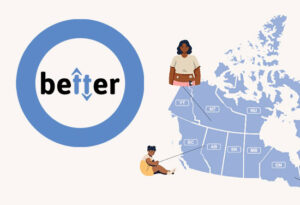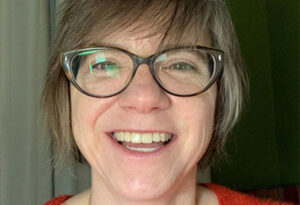
Ashlynn O’Hara is 10 years old, lives with type 1 diabetes (T1D), and is taking her fight for affordable continuous glucose monitors (CGM) to the big leagues.
In recent months, Ashlynn has met with various members of the Alberta government, shared her story and asked some tough questions on behalf of the T1D community. To kick off her advocacy efforts she sent JDRF’s #AccessforAll letter to her local MLA which led to meeting with him. He was so blown away by what she said that he set up a meeting between Ashlynn and the UCP Health Critic for the following week. But then an election was called, everyone became a candidate again and her meeting was cancelled.
“Our meeting was cancelled but then I asked my mom, ‘why don’t we talk to all candidates?’ so that’s why we’ve been attending candidate forums”, says Ashlynn. Ashlynn pre-submits questions for the candidates and at two of the forums they recently attended, a question including type 1 diabetes was part of the panel discussion, “at last night’s forum, they asked the candidates ‘what is each party’s position on coming up with strategies to help the T1D community?’. But nobody had an answer, and the candidates said that they haven’t heard about a strategy so they just passed on the question”. But Ashlynn and the rest of the T1D community wanted an answer so she approached each candidate after the discussion and said “you have to go to your decision makers and ask for an answer to this”.
There’s no denying that Ashlynn is a passionate and smart young person, but what is it that makes her so motivated to win this fight for affordable and accessible CGMs? “In September of 2018, Ashlynn had hit a breaking point with her blood glucose numbers so her doctor had said that Ashlynn was a good candidate for the CGM,” says Tammie O’Hara, Ashlynn’s mom. “When she was considering getting the CGM Ashlynn released a short video on her social media about how these monitors are not affordable or accessible, and this was a hard time for us because she was feeling very torn about getting one for herself. Ashlynn was one of three kids with T1D in her school and if Ashlynn got a CGM that meant that two of them would have one and the other wouldn’t. It was a really hard decision for Ashlynn because ‘it just isn’t fair’.”
When Ashlynn made the decision to get a CGM and it arrived, the mixed feelings continued, “She knew that her body needed the CGM and she was excited because she knew the impact it would have on her life but she was sad that her classmate would be left behind,” says Tammie. And having the CGM improved Ashlynn’s quality of life in ways one couldn’t have imagined, “it took so much stress off of my mind. It helps me get some sleep and my grades in school have improved. I’m able to focus on what is being taught, on my projects and reading,” says Ashlynn. And the impact of the CGM was immediate, “we knew that Ashlynn was under stress but we didn’t realize how much stress she was under because she had to monitor her blood sugar all of the time at school. But from day one, we could see a weight lifted off of her,” says Tammie. “Her teacher said that Ashlynn was blossoming into a whole new kid because of this monitor. She’s participating in everything, even gym, which used to make her nervous because exercise tends to drop her [blood sugar] quite quickly. That’s when I realized that these CGMs are life-changing, there’s no other way to put it.”
So what does Ashlynn want her advocacy work in the #AccessforAll campaign to lead to? “I want to see that CGMs are actually covered by the government, and recognized not just by provincial governments but also the federal government. I want them to know about the importance of monitoring and how it can help reduce the side effects that come along with T1D.”
Join Ashlynn in the fight for affordable life-changing technologies by meeting, calling or writing to your provincial or territorial representative to urge them to support reimbursement for these technologies. Your story, like Ashlynn’s, will help them understand how valuable these technologies can be in managing type 1 diabetes.
Ashlynn’s Advocacy Tip: How to prepare to share your story and speak about #AccessforAll
“I write a letter with point form notes on the messages that I want to deliver to whoever I’m speaking with. My letter includes notes about my story and the following items:
- I’m working hard on a campaign called Access for All to make CGMs affordable for all.
- Managing my diabetes is really important and I need all of the help I can get, including the CGM.
- Diabetes is an expensive disease and CGMs remain out of reach for a lot of families. I’m looking to change this so kids like me can live a longer and healthier life.
- Will you work with me? The time to make CGMs affordable is now.
There is so much to say about T1D and this campaign so having a letter like this is helpful. It makes me confident about sharing my message and informing people about type 1 diabetes, and usually results in people asking me more questions.”
For more support with preparing to have a face-to-face meeting read our five step guide to briefing elected officials.
Check out Ashlynn’s story here and follow her on Facebook and Instagram to support her on her journey to bring these life-changing technologies to all members of the T1D community.





